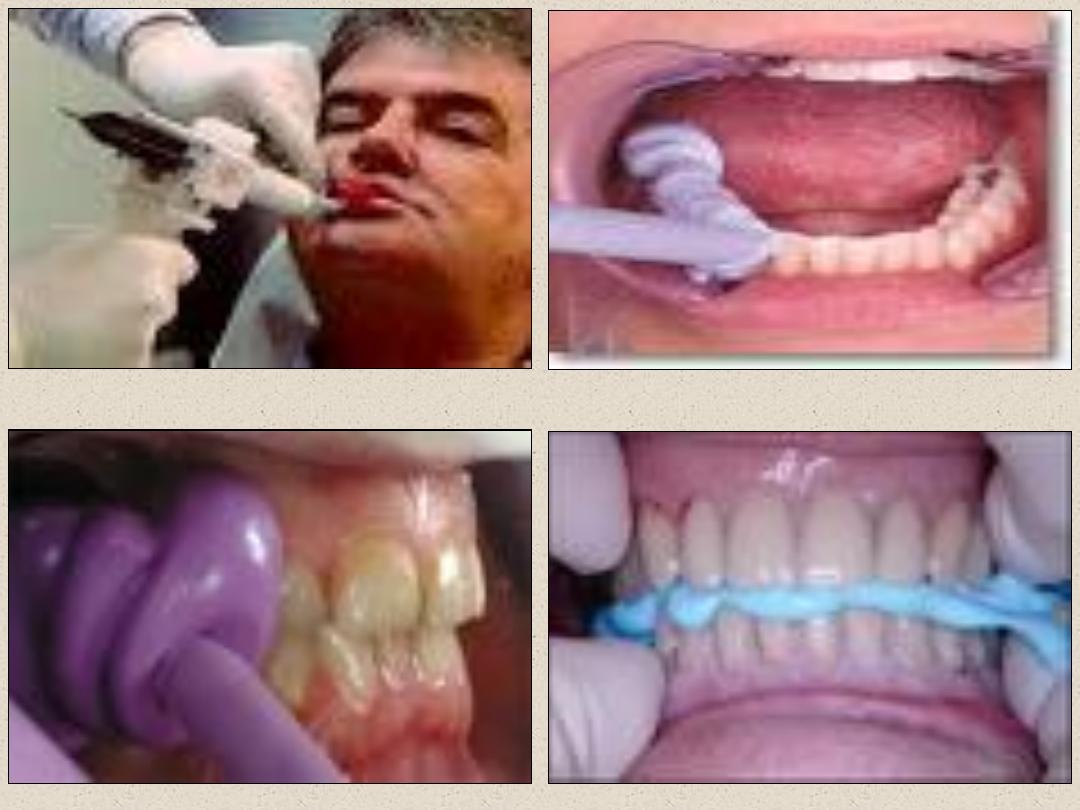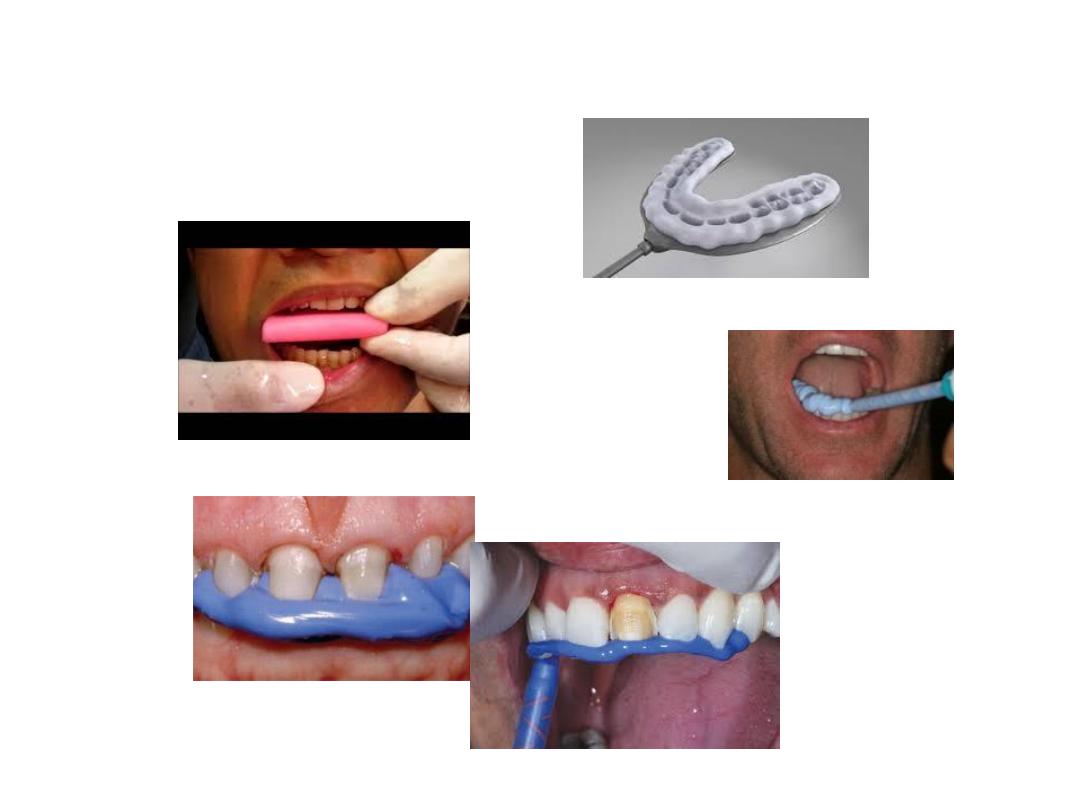
Interocclusal Record
(Bite Registration)
Dr.Emad Farhan Alkhalidi
MSc, pHD
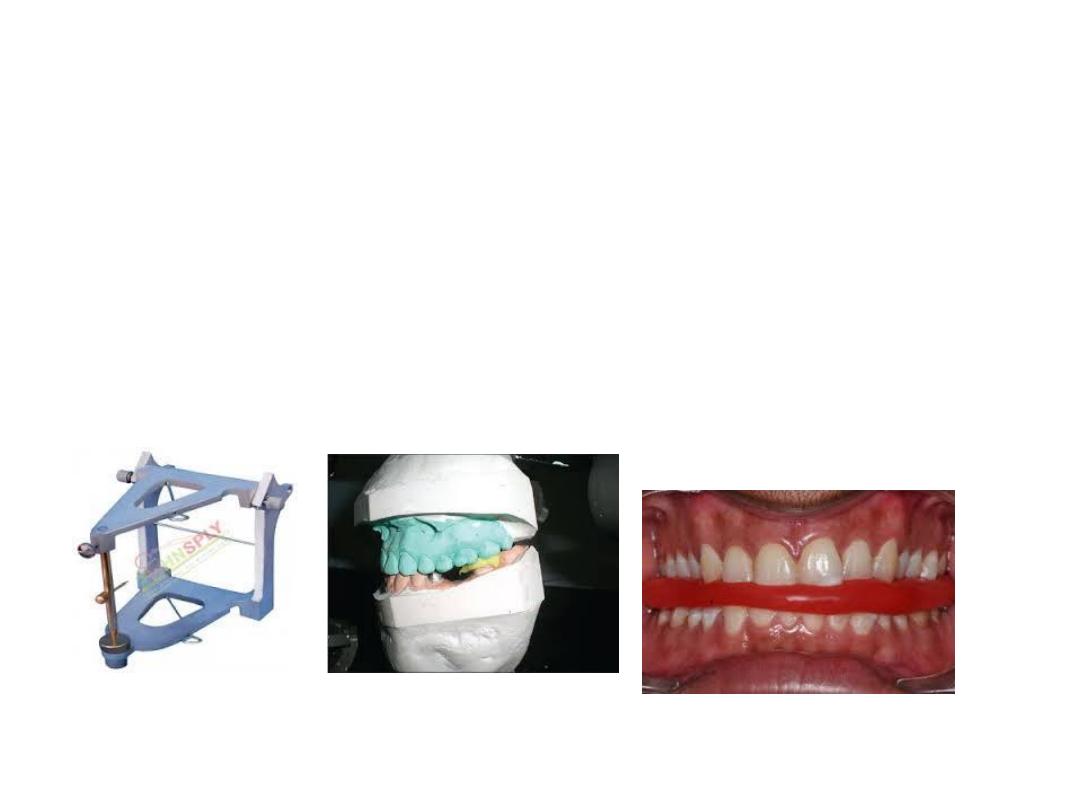
Bite registration : is a technique by which
the dentist transfer the relation ship between
the upper and lower jaw from the patients
mouth to the articulator.
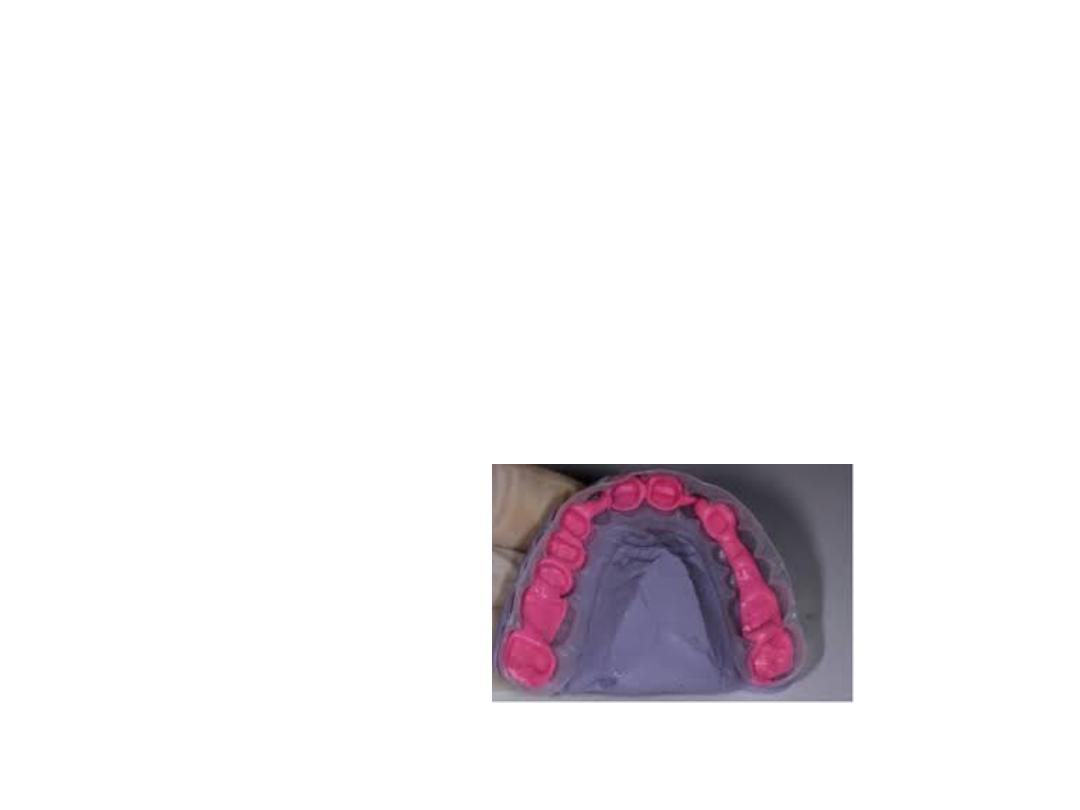
Bite registeration allows the dentist to
observe accurately tooth contact, occlusal
discrepancies and to fabricate restorative
procedure for the patient without changing in
patients occlusion.

Proper inter occlusal record is important to orient the
die or dies of the prepared & unprepared teeth in the
same arch to the opposing arch.
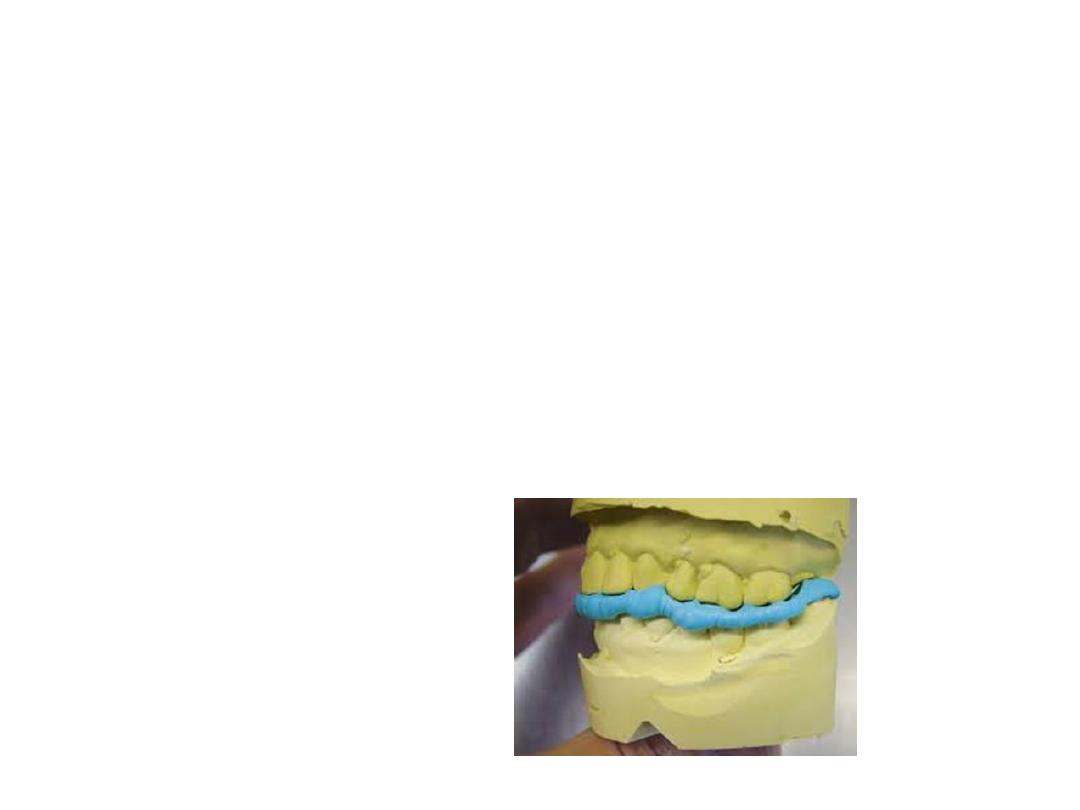
Its important to establish and transfer the relation
ship between the maxillary and mandibular dental
arches that exists when the condylars are in the
posterior superior position in the glenoid fossa to
an articulator using a bite registration materials.

Requirements of material used:
1- It should be stable (have little or no dimensional
change during setting.
2- It should give accurate record of occlusal surface and
incisal edges of the teeth.
3- It should not affect normal closing of the mandible.
4- The material should remain rigid after setting.
Its better to check the inter occlusal record several time
inside patient mouth.
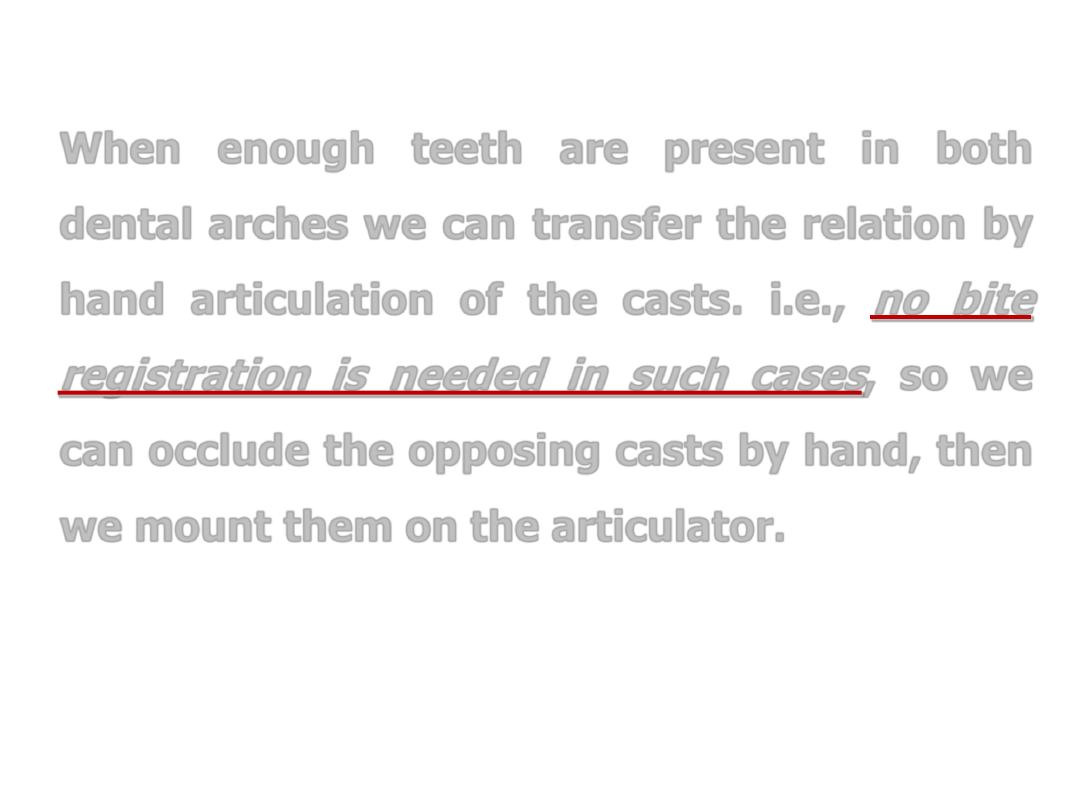
When enough teeth are present in both
dental arches we can transfer the relation by
hand articulation of the casts. i.e.,
no bite
registration is needed in such cases
, so we
can occlude the opposing casts by hand, then
we mount them on the articulator.
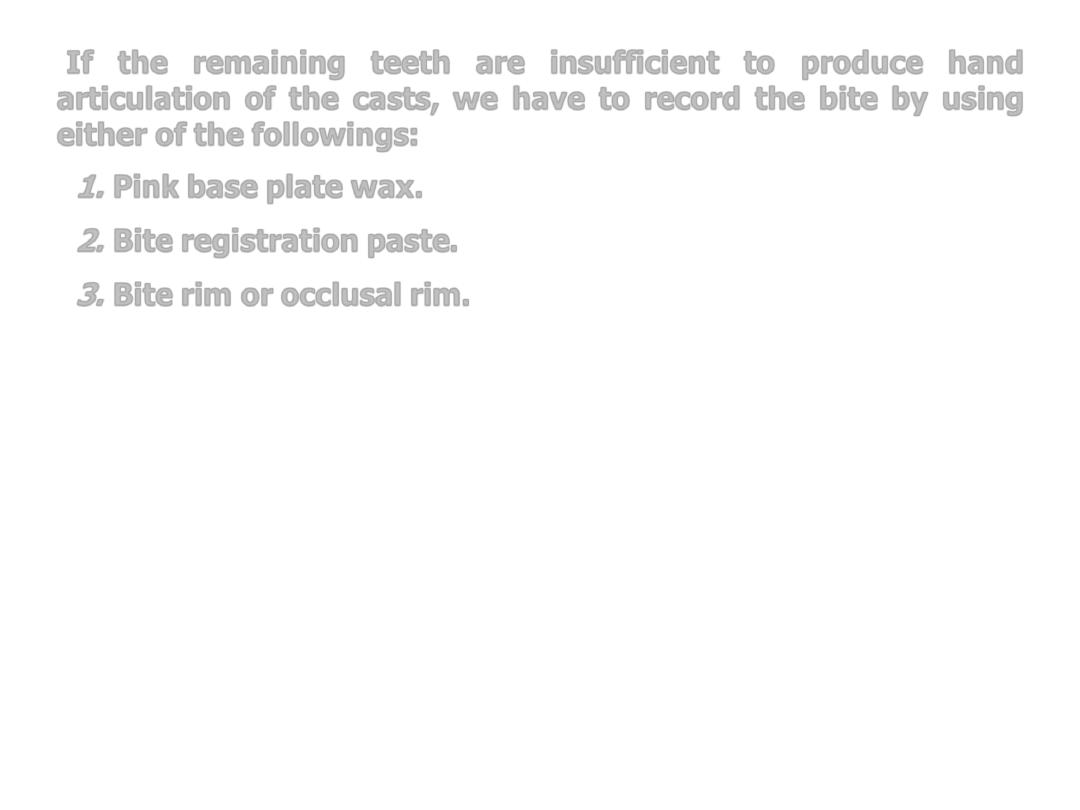
If the remaining teeth are insufficient to produce hand
articulation of the casts, we have to record the bite by using
either of the followings:
1.
Pink base plate wax.
2.
Bite registration paste.
3.
Bite rim or occlusal rim.

Centric relation:
It is an arch to arch (mandible to maxilla)
relationship when the condyles are in their
terminal hinge axis (on the most superior-
posterior position) in the glenoid fossa
irrespective to teeth contact, It is the starting
point of occlusion.
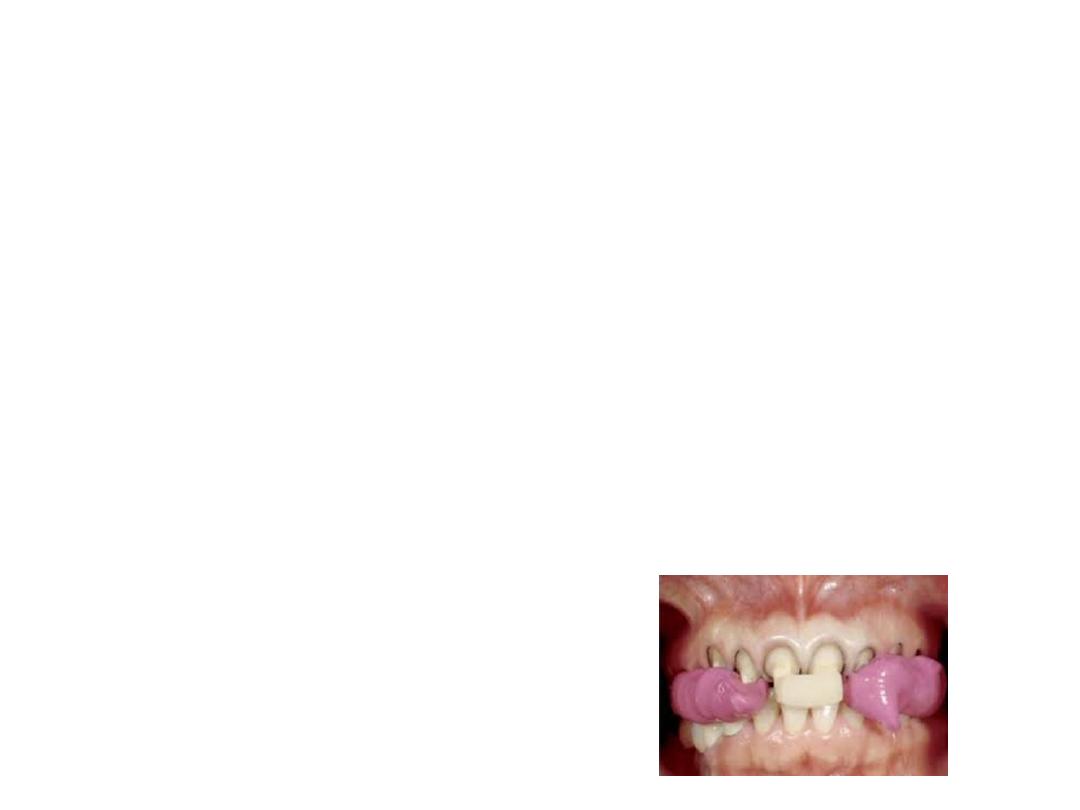
Centric relation is the physiological position of the
condylar head of the mandible (without stress) from
which all other movement is initiated.
Centric relation is taken when no enough occlusal stops
are left after teeth preparation especially in cases of full
mouth rehabilitation of fixed partial denture. Including
distal terminal abutments unilaterally or bilaterally.
In centric relation it must not perforate the registration
material.
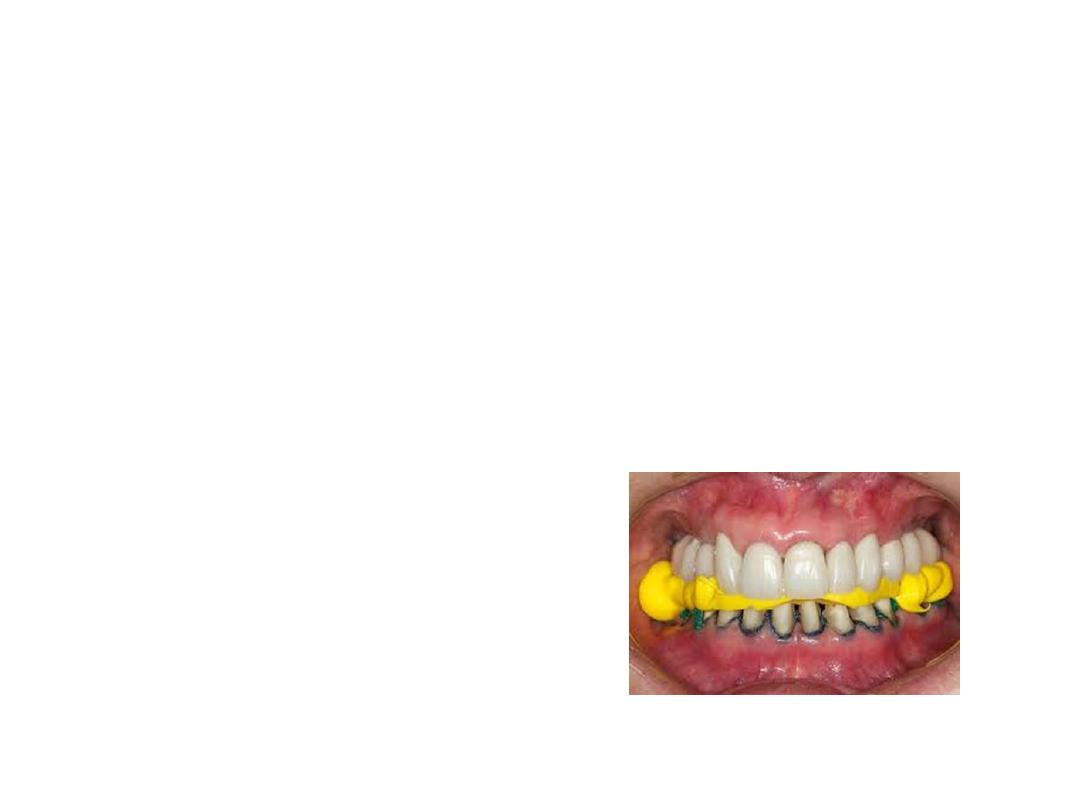
Centric occlusion :
teeth to teeth relation ship it is the
maximum occlusal contact or intercuspation irrespective of
condylar position.
Maxillary and mandibular teeth should contact in harmonious
manner that allows optimum function, minimum trauma to the
supporting structure and an even distribution of load through the
dentition.

Centric occlusion can be taken when there are
enough occlusal stops after preparation for a
crown and bridge.
IN RECORDING THE CENTRIC OCCLUSION WITH
MAXIMUM INTERCUSPATION THE RECORD
MATERIAL MUST SHOW PERFORATION IN AREA
OF CONTACT TEETH.

Dowson's technique:
Dowson's in 1974 suggest to place the dental chair in
reclined position and the patient's head fixed by the
dentist standing behind the patient with both thumbs on
the chin and the fingers resting on the inferior border of
the mandible.
Then by gentle downward pressure by thumbs and
upward pressure on figure the patient's mandible will
bring into centric and let the patient bite on the
registration material.

Methods of inter-occlusal record:
1. If enough teeth are present in both upper and lower arches to
stabilize their relation ship. No bite registration is needed we can
transfer the relation by hand articulation.
2. If the remaining teeth are insufficient to provide hand
articulation of the cast we can use:
-Pink base plate wax or alu-wax (wax reinforced with fiber)
Apiece of wax is placed on the maxillary teeth and ask the
patient to close in centric relation then the wax is removed and
placed in water for cooling.

- Registration paste:
Zinc oxide eugenol quick set paste is mixed and
applied on aplastic bite frame with fiber glass to
support bite registration paste.
It’s a common method of taking a bite it may be
used uni or bilaterally it has the advantage of
producing accurate details and being very stable
when set.

Procedure:
1. Select the frame.
2. Mixed the registration paste and apply it on both sides of fiber glass.
3. Place the frame with past over the prepared teeth without interference with
patient closure.
4. Ask the patient to close using a dowsons technique and check the key point of
occlusion.
5. After setting trim the paste to a depth leaving only the tip of the cusp both
prepared and unprepared side, so that the bite material will not interferes
with complete seating of the cast into the bite taken.
6. Put the bite on its placed on one cast bring the other cast on the proper place
and check the key point of occlusion.
Mount both casts on articulator.

3- Occlusal rims:
- When insufficient number of the teeth are
present to stabilize the cast. A bite rim must
be made using a base plate wax to replace
the remaining teeth.( this rim is necessary
when restoring anterior teeth and the
posterior teeth are missing leaving unstable
opposing cast).
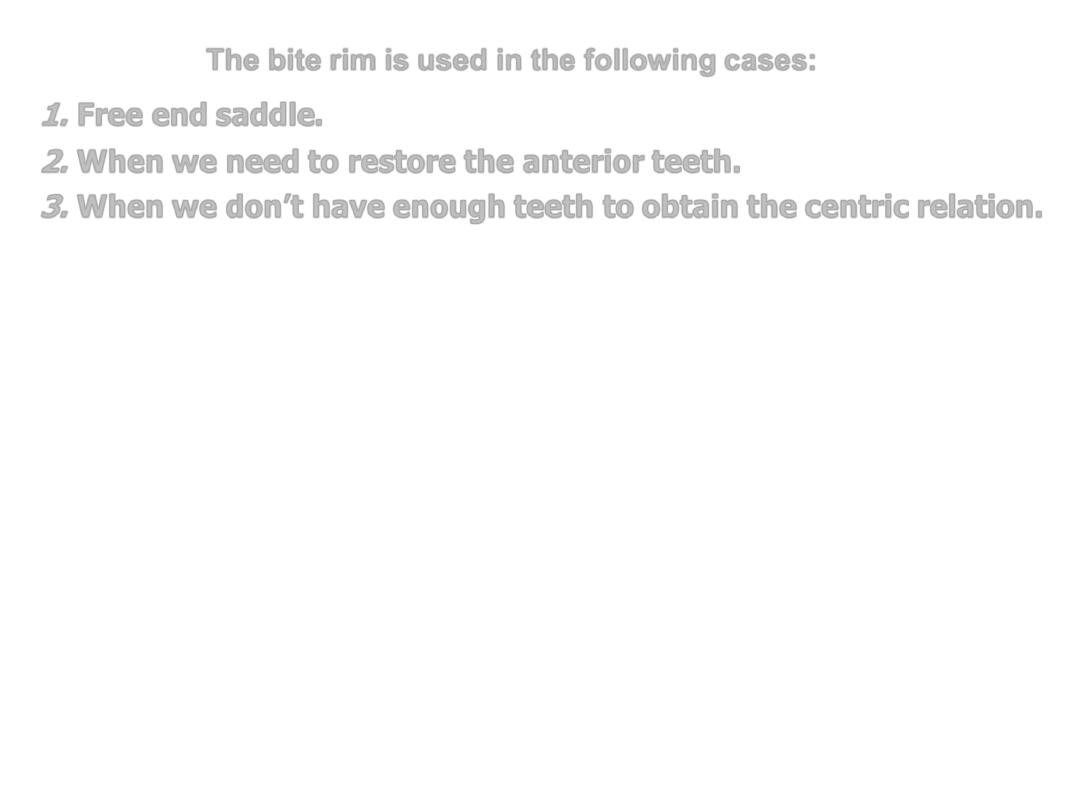
Bite rim:
The bite rim is used in the following cases:
1.
Free end saddle.
2.
When we need to restore the anterior teeth.
3.
When we don’t have enough teeth to obtain the centric relation.
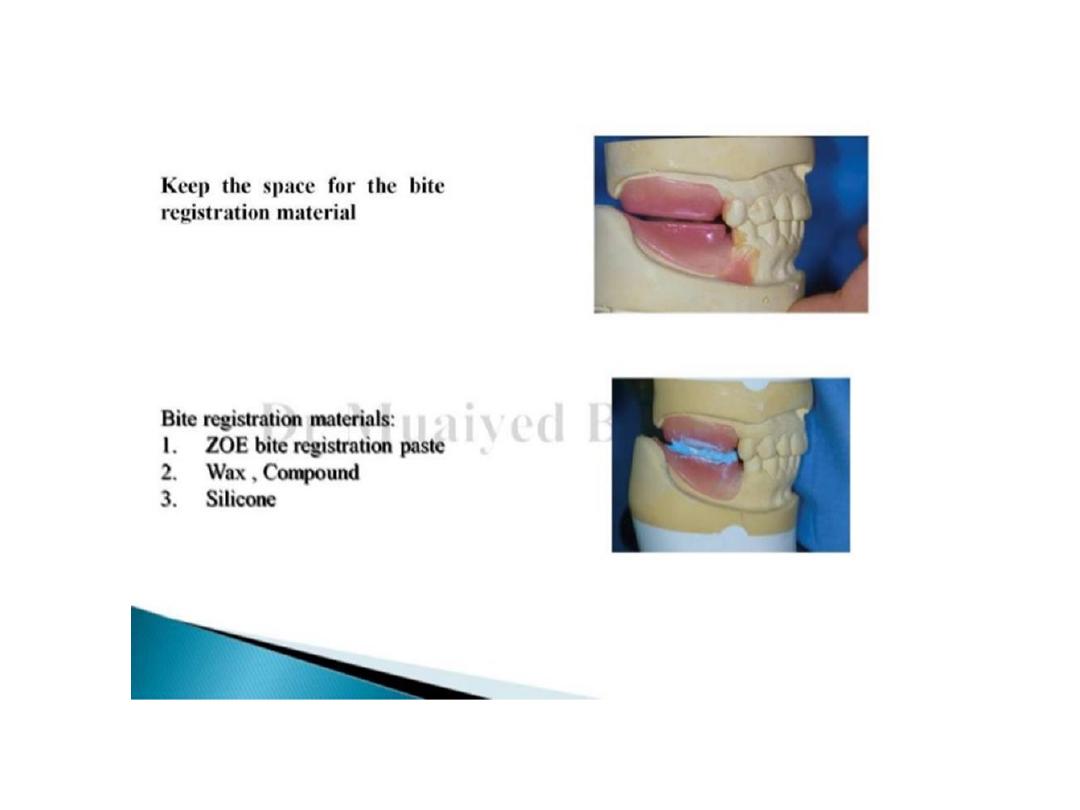

If the patient is under local anesthesia
or conscious sedation it makes a much
more difficult for patient to provide the
dentist with the correct registration
patient who have been anesthetized with
mandibular blocks will lose their
proprioception ability into centric
occlusion.

Glass bite material this material is introduced between the
dental arches with the special cannula and can be applied
ideally between the dental arches much faster and more
easily than other materials.
Its staible and transparent .
Luxabite rigid bite registration advantages:
1-
Highly accurate to the models
2-
Can be used with or without bite registration trays
3-
No interference with closure of teeth
4-
Fast setting and easy to trim
5-
Resist normal temporary variations (better than wax)
6-
No compression on mounting
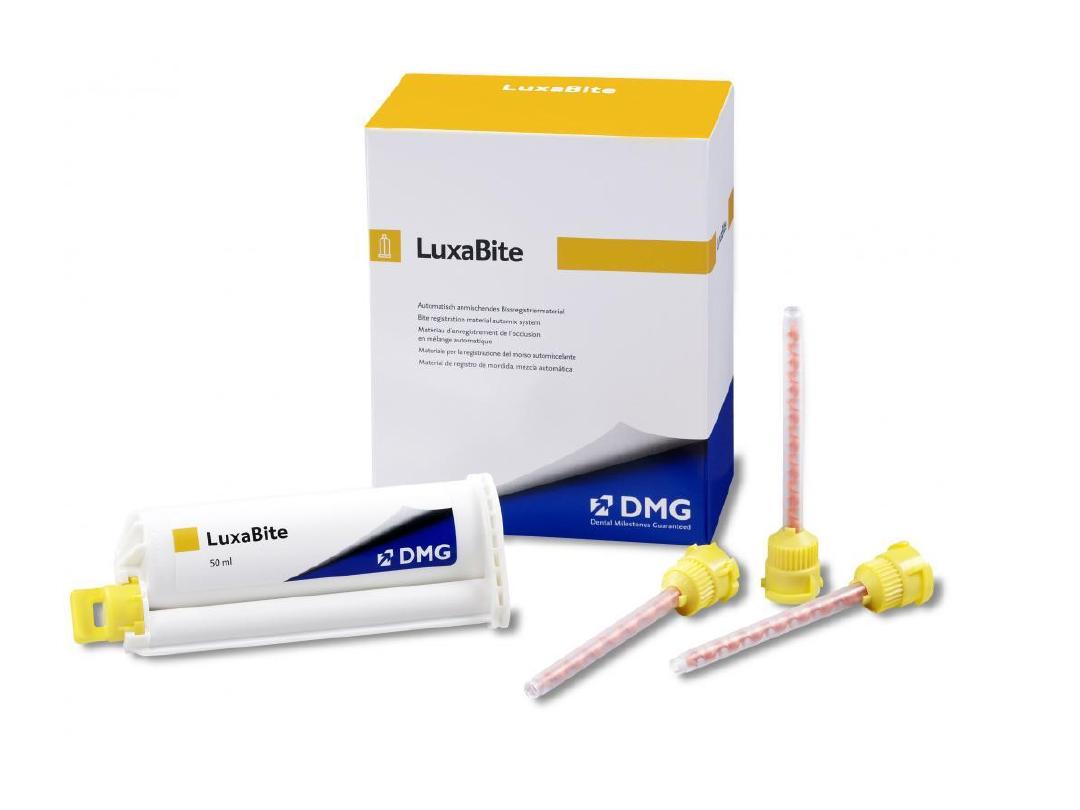
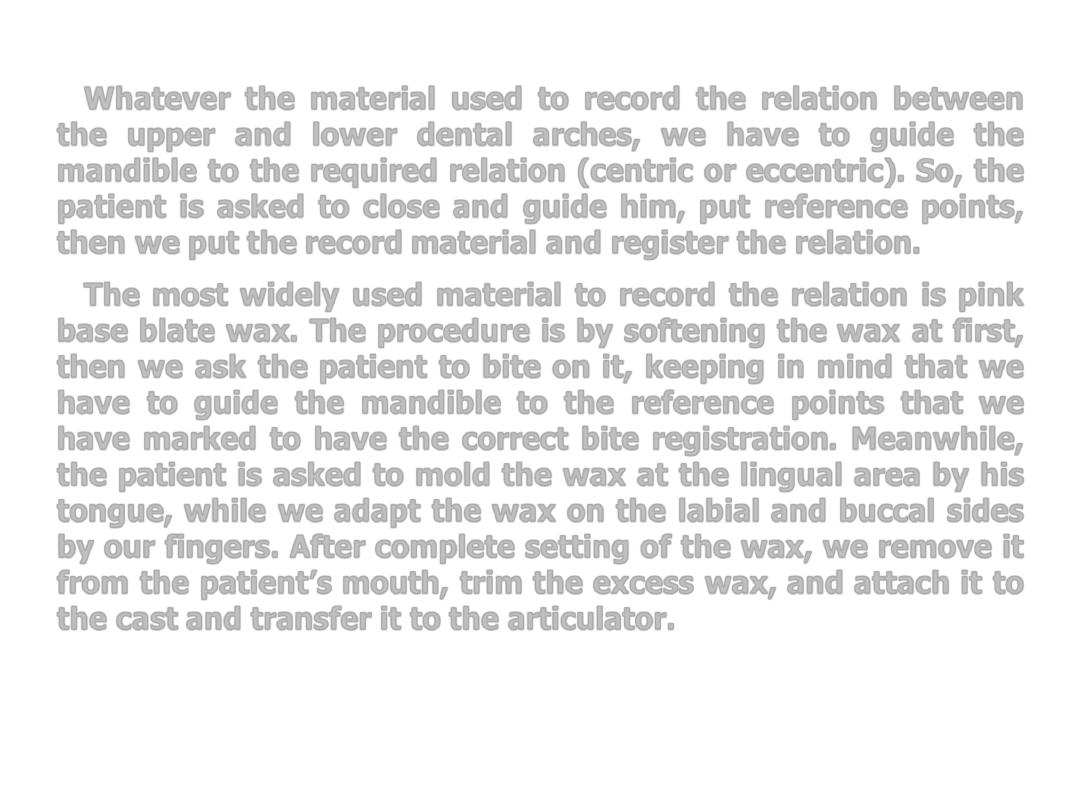
How to record?
Whatever the material used to record the relation between
the upper and lower dental arches, we have to guide the
mandible to the required relation (centric or eccentric). So, the
patient is asked to close and guide him, put reference points,
then we put the record material and register the relation.
The most widely used material to record the relation is pink
base blate wax. The procedure is by softening the wax at first,
then we ask the patient to bite on it, keeping in mind that we
have to guide the mandible to the reference points that we
have marked to have the correct bite registration. Meanwhile,
the patient is asked to mold the wax at the lingual area by his
tongue, while we adapt the wax on the labial and buccal sides
by our fingers. After complete setting of the wax, we remove it
from the patient’s mouth, trim the excess wax, and attach it to
the cast and transfer it to the articulator.
